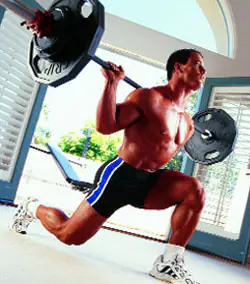When using data to plan the achievements of weightlifters in their long-term training, you need to keep in mind that the same athlete, continuously, from year to year, the growth of results will not be the same as shown in table No. 1. Possible growth in individual years is shown here; in reality, the growth of an athlete’s results may coincide for 2-3 years in a row, and then be below average. In some years, the growth in results may significantly exceed average values.
The dynamics of results in weightlifting depend on the age at which the weightlifter began training. When weightlifting starts not at age 16, but earlier, the results in the first years are lower, the younger the athlete. If classes begin after 16 years of age, the results in the first years are higher, the older the age at which classes begin. By about the 8th year of training, the results for both level out and become equivalent, because in young athletes in the first years of training the growth rate is higher, and in older athletes it is lower.
By the way, the older we get, the more stress our ligaments, joints, intervertebral discs and connective tissues experience. Therefore, if your sports discipline involves lifting serious weights (bodybuilding, powerlifting, weightlifting), we recommend supporting these problem areas with additional specialized sports nutrition products. For example, we advise you to read at your leisure about the Labrada elasti joint - just this kind of popular product for weightlifters, lifters and bodybuilders...
We’ve sorted things out a bit with age, but how does an athlete’s weight affect performance? – let’s look into this issue too... The dynamics of results for athletes in heavy weight categories is somewhat different: for example, they meet the MSQ standard approximately 1-1.5 years later than other athletes. All this must be taken into account when planning training over many years.
Of course, the more weight (and therefore muscle mass) you need to increase, the longer it will take. That is why, starting training at the age of 16, the following athletes move into “their” weight category corresponding to their height: athletes in light weight categories - after an average of 4 years, in medium weight categories - after 4.5 years, and in heavy weight categories - after an average of 6.5 of the year.
Post Views: 128


